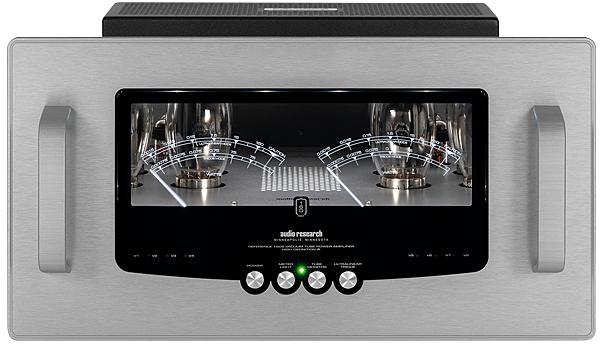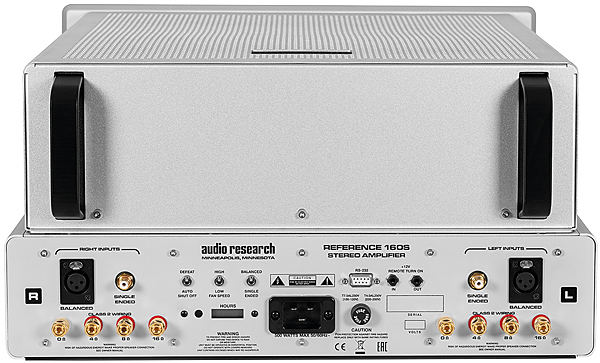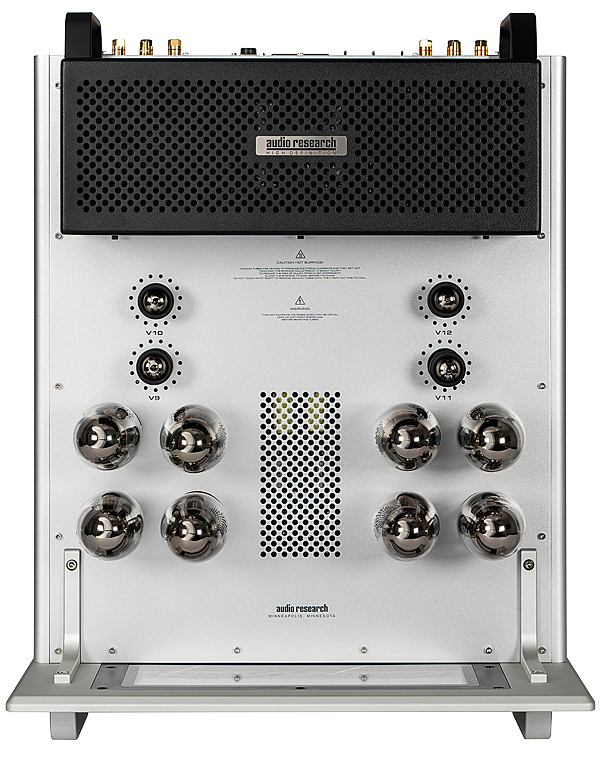Audio Research REF160S Tube Power Amplifier

 The REF160M monoblocks were a radical change for the venerable Reference Series, and now they have been 'cut 'n pasted' into a single, spectacular stereo chassis
The REF160M monoblocks were a radical change for the venerable Reference Series, and now they have been 'cut 'n pasted' into a single, spectacular stereo chassis
This should have been the simplest, swiftest review for me to undertake: I would simply drop the stereo version of the Audio Research Reference 160M [HFN Aug '18] into my system in place of the Reference 75SE. Double the number of KT150s and double the power, a price tag of two quid shy of twenty grand, fond memories of the monoblocks still tugging at me after 18 months: the Audio Research Reference 160S should have been a doddle, easy to anticipate. But it wasn't.
It has been Audio Research's practice to deliver stereo versions of its monoblocks after a suitable passing of time. In theory, the differences should relate solely to general monoblock-vs-stereo amp arguments: total isolation of left-and-right channels and separate AC sources for both, versus shared elements in the stereo edition. But here it's not straightforward because the new model – hitherto called the REF160S – is almost too good.
Dandy Triode
At first glance, this looks to be exactly what a stereo version should be: same rating, but a single chassis and a massive cost saving – roughly 30%. Otherwise, it's the same in operation and practice, again with the pain of valve housekeeping reduced thanks to auto-bias and the delicious user option of switchable Ultralinear and Triode operation on the fly.

But this calls for a moment's digression, as I champion the KT150. Over the years, I have been drawn to a handful of output valves, including the KT77, 211, 845, and I am no more ashamed than those who worship the 300B triode. But just as the 6550/KT88 became the de facto tube for most makers, as did the EL34 decades before, the KT150 has become a modern classic. Moreover, Audio Research truly knows how to apply it – as I found when moving from the REF75 [HFN Nov '12] to REF75SE. With REF160M or S, we find it also makes a dandy triode.
As editor PM counselled me, 'Triode mode offers half the power and fractionally less distortion here, but how does it sound?'. Once again, I wish there was armchair remote selection available here, but I still found the choosing of Ultralinear-vs-Triode to be source-, genre-, system- and political-bias-dependent, but that's simplifying it too much. As I said, my initial thoughts that this review would prove to be a doddle were swiftly crushed.

It was gonna be a breeze – dig out my notes for the 160M review, same music. But in the interim, I had changed from Wilson Yvettes [HFN Feb '17] to Sasha DAWs [HFN Mar '19], acquired the TechDAS Air Force III Premium turntable [HFN Jun '19] and changed all wiring to Transparent. So I had to approach this with fresh ears.
![]() Two Into One Will Go
Two Into One Will Go
Installation was utterly straightforward. The rear of the amp is fitted with stout 4mm binding posts with nominal 16, 8 and 4ohm taps and an array of toggles to select single-ended or balanced inputs, fan speed and auto-shut off. Tube hours are indicated on the back.
Initially, I didn't even bother to check whether I was in Triode or Ultralinear mode, the power differences between the two never an issue for me as I'm no headbanger. I couldn't wait to hear the thing but impatience is an ugly trait, and switch-on involved the usual waiting for the unit to settle down and come out of its mute condition. I was chomping at the bit. Those two minutes or so seemed an eternity...
It was worth it, for what issued forth was so extreme a jump in performance that I immediately thought about selling my wine cellar so I could acquire a REF160S of my own. As there had been so many changes to my system since I reviewed the monoblocks, I threw out the notion of using the same LPs and CDs in an attempt at repeating precisely the same test. Instead, I trusted my ears (and hundreds of hours with the rest of the system) to decipher the charms and merits of the REF160S. And it started with the bass.


















































